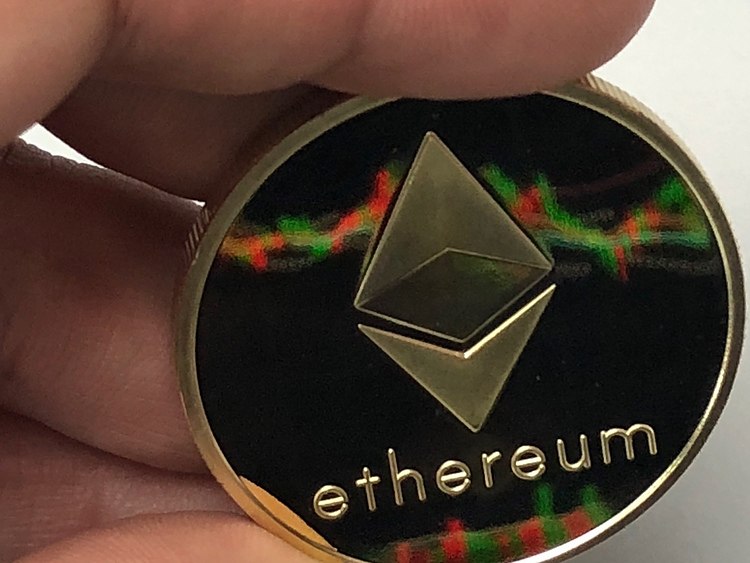If the new proposal is approved, Ethereum will be 50% faster and more DEX efficient. EIP-7781 has already gained support from key members within the Ethereum community. Ethereum continues to consolidate below the $2,500 level after hitting the Doge candle.
Ethereum (ETH) is up slightly by 0.1% on Monday following the appearance of the Doge candle, indicating that the price trend may be reversing. This potential price change is based on the new Ethereum Improvement Proposal (EIP) EIP-7781, which aims to reduce slot times and increase network speeds by approximately 50%.
Ethereum’s new proposal to improve throughput and DEX efficiency
The new EIP-7781 was first proposed by Illyriad Games co-founder Ben Adams and aims to increase Ethereum throughput by 33% through the process of reducing slot times from 12 seconds to 8 seconds. I’m here. Slot time is the interval at which validators propose new blocks to the Ethereum network.
A reduction in slot time also means a reduction in base rollup latency. A base rollup is a new type of rollup that leverages the main chain for the transaction sequence, as opposed to an optimistic rollup or a ZK rollup.
This change also means that the count of BLOBs (a data structure for storing L2 transactions introduced in March’s Dencun) will increase from 6 to 8, or the gas limit will increase from 30M to 40M .
There is a new EIP that increases Ethereum throughput by 50%.
– 12 seconds block time -> 8 seconds
– 6 data blobs per block -> 9 blobs per block
– DEX efficiency increases by approximately 1.22 times
If approved, this would be a major step towards improving the performance of Ethereum L1. pic.twitter.com/MkX5gbiBFR
— Cigar (@0xCygaar) October 6, 2024
EIP-7781 has already received support from key members within the cryptocurrency community, including Ethereum researcher Justin Drake, who said the proposal would improve speeds by 50%, similar to Uniswap v3 1.22x. He said that the efficiency of decentralized exchanges will improve. Such efficiencies could potentially save $100 million in price differences that arbitrageurs benefit from, “ultimately leading to better execution for users.”
Although many have expressed concerns about the potential hardware requirements of implementing this proposal, Adams pointed out that these benefits can be achieved without increasing peak bandwidth.
EIP-7781 will go through Ethereum’s governance voting process before developers take the next steps towards implementation.
Meanwhile, Ethereum ETFs recorded net outflows of $29 million worldwide last week, according to data from CoinShares.
Ethereum holds steady below $2,500 following major indecision candlestick
Ethereum was trading around $2,450 on Monday, slightly up on the day. The top altcoin continued to see close to $57 million worth of liquidations in the past 24 hours, with long-term and short-term liquidations accounting for $41.23 million and $15.75 million, respectively.
ETH is consolidating within a major rectangular channel after seeing a rejection near the psychological level of $2,500, posting a Doge candle on the 4-hour chart.
ETH/USDT 4 hour chart
Doji candles are formed when the opening and closing prices of an asset are approximately the same. Candlesticks represent indecision among traders and can indicate a possible trend reversal. As a result, ETH could temporarily decline towards support near $2,395.
The bearish move is supported by the price below the convergence of the 50-day and 100-day simple moving averages (SMAs) around $2,470.
The Relative Strength Index (RSI) and Stochastic Oscillator (Stoch) momentum indicators are slightly below the neutral level, indicating bearish momentum among traders.
This theory is invalidated if the daily candlestick closes below $2,395.
Frequently asked questions about Ethereum development
After the Dencun upgrade in March 2024, Ethereum users are looking towards the Pectra upgrade scheduled for early 2025. The upgrade will occur in two phases, including improvements to the wallet experience, upgrades to Ethereum Virtual Machine (EVM), PeerDAS for scaling L2, and blob capacity improvements.
A fork is an upgrade or change to the codebase/architecture of a blockchain network. Considering that blockchain networks have no central governance, forks are only performed after developers and validators come to an agreement. A hard fork is a substantial permanent change in a blockchain protocol that creates two parallel chains. One is the old rules and the other is the changes that have been implemented. Developers can upgrade their software and build on the new chain, or leave it on the old chain as a separate network. During a hard fork, users receive an equivalent amount of tokens on a 1:1 basis on the new blockchain network. A soft fork, on the other hand, is a subtle change on a blockchain network that is backward compatible. This means that even if some developers do not implement new changes, the network will continue to operate as a single entity.
Ethereum Improvement Proposal EIP-7702, famously scribbled in 22 minutes by Ethereum co-founder Vitalik Buterin, combines EIP-3074 and ERC-4337 to enable mass adoption of Ethereum’s smart wallet features. This is an advanced way to do this. EIP-7702, which is scheduled to go live with a future Pectra upgrade, will enable batch processing that allows users to pay a one-time transaction fee for multiple actions, as well as allow accounts to pay gas fees for other actions. Implements an advanced version of account abstraction that enables features such as sponsorships that allow you to pay. Wallet recovery options for users and in case they mistype the seed phrase.
Layer 2 is a general term for protocols that aim to extend Ethereum by processing batches of transactions outside of the mainnet. These L2s perform a series of mathematical calculations to check validity and then send a compressed version of the transaction back to mainnet for final processing. As a result, Layer 2 networks reduce transaction fees and increase mainnet speed while ensuring security. Think of them like a few personal assistants who help the boss handle a bunch of paperwork. These assistants send a condensed version of the document to their supervisor, who reviews and signs it.
Layer 3 solutions are application-specific blockchains built on top of existing Layer 2 networks, offering high scalability and interoperability. For example, L3 can focus on privacy initiatives, increased scalability, gaming, or some complex functionality while ultimately pulling security from layer 1.


